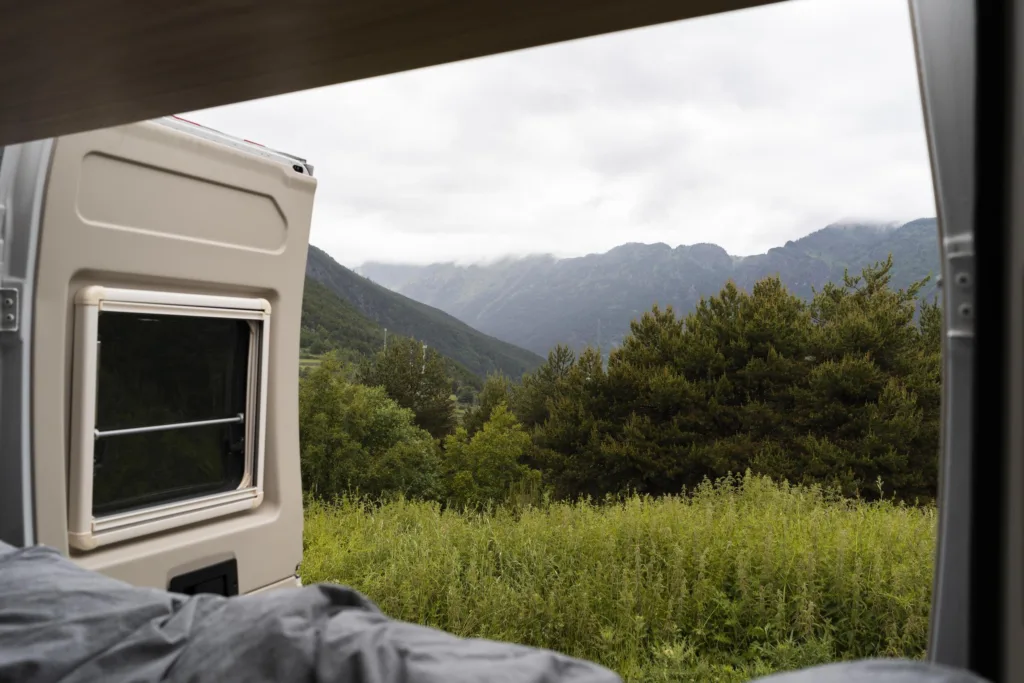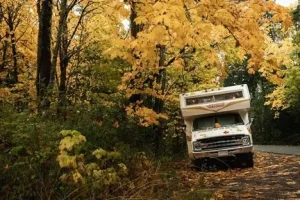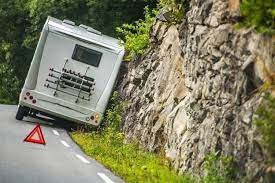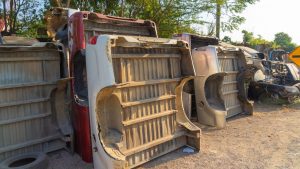
“What is RV boondocking?” is a question many ask when they first hear the term. Recreational Vehicle boondocking, also known as dry or dispersed camping, involves staying in a trailer or motorhome without using traditional amenities such as electricity, water, and sewer hookups. Boondocking provides a unique experience that allows campers to enjoy nature’s beauty and escape the hustle and bustle of daily life.
This article will provide a complete boondocking guide, including where to go and how to find the perfect boondocking site. Keep reading if you’re new to boondocking and wondering how to boondock in an RV.
A Brief History of Boondocking
Boondocking has been around for many years and was initially popularized by campers and RV enthusiasts who wanted to explore remote areas that were not accessible by traditional campgrounds. The boondocking definition is unclear. Some sources suggest it may have come from the Tagalog word “bundok,” which means mountain or rural area. Over time, boondocking has become a popular pastime for outdoor enthusiasts who want to experience the freedom of boondock camping without the constraints of established campgrounds.
Where Can You Boondock in Your RV?
Boondocking is allowed on many public lands, including national forests, Bureau of Land Management (BLM) land, state parks, and private property. Each type of land has unique features and benefits, making it essential to research and plan your trip accordingly.
Types of Public Lands that Allow Boondocking
- National Forests: National forests provide some of the best boondocking opportunities in the country. Many national forests offer free dispersed camping, meaning you can camp in designated areas without amenities. However, some national forests have specific boondocking rules and regulations, so check before you go.
- Bureau of Land Management (BLM) Land: BLM land is public land managed by the Bureau of Land Management. Like national forests, BLM land offers free dispersed camping in designated areas. BLM land is often found in the western United States, and it’s an excellent option for boondockers who want to explore deserts, mountains, and other unique landscapes.
- State Parks: Many state parks offer boondocking opportunities for RVs. State park campgrounds are often more developed than national forests or BLM land, but they can still offer a sense of seclusion and privacy. Some state parks require reservations for boondocking, while others offer first-come, first-served sites.
- Private Property: Some landowners allow boondockers to camp on their property for a fee or as a courtesy. Private property can offer more amenities than public lands, such as access to water and electricity. However, you’ll need permission from the landowner before you go.
Examples of Popular RV Boondocking Locations
Here are some of the best places for RV boondocking in the United States.
- Quartzsite, Arizona: Quartzsite is a popular boondocking location in the southwestern United States. It’s known for its vast expanses of BLM land and numerous RV gatherings and shows.
- Moab, Utah: Moab is an outdoor enthusiast’s paradise and is home to several national parks, including Arches and Canyonlands. There are many boondocking opportunities in the surrounding BLM land.
- Escalante, Utah: Escalante is a small town with stunning natural beauty, including the Grand Staircase-Escalante National Monument. There are many boondocking opportunities in the surrounding national forest and BLM land.
The Differences Between Boondocking in National Forests, BLM Land, and Other Public Lands
As mentioned, RV boondocking is allowed on public lands managed by the Bureau of Land Management (BLM) and the US Forest Service. However, there are differences between the two. BLM land has fewer restrictions, and you can camp anywhere that’s not prohibited. Forest Service land may have more restrictions, and you may need a permit to camp.
Various government agencies, such as the Army Corps of Engineers and the National Park Service, manage other public lands. Each of these agencies has its own rules and regulations for camping and boondocking, so it’s important to check before you go.
How to Find the Best RV Boondocking Sites
Here are some tips on how to find the perfect spot for your next RV boondocking adventure:
- Research and plan: Before boondocking, research the location, weather, and road conditions. Make sure you have enough supplies, water, and food for the duration of your trip.
- Use boondocking websites and apps: Many websites and apps are dedicated to boondocking, such as freecampsites.net and Campendium. These resources provide information on boondocking sites, including reviews and photos.
Types of Boondocking
Boondocking can be a great way to enjoy the outdoors while living in an RV. However, not all boondocking is the same. There are different types that you should know about before you head out on your next adventure.
Dispersed Camping vs. Established Boondocking Sites
Dispersed camping is camping in undeveloped areas on public lands. It’s also known as primitive camping. You can camp anywhere in a dispersed camping area, as long as it’s not in a restricted area. Dispersed camping is a popular type of boondocking because it’s often free, and you can camp in remote, beautiful locations.
Established boondocking sites are areas set aside for camping. They’re often found in remote areas and can be free or have a small fee. Established boondocking sites may have fire pits, picnic tables, and toilets.
Dry Camping vs. Partial Hookups vs. Full Hookups
- Dry camping is camping without utility hookups. Instead, you must rely on your RV’s water and electrical systems. You can still use propane for cooking and heating.
- Partial hookups provide some utilities, like water or electricity, but not both. In addition, some sites may have a dump station for your waste tanks.
- Full hookups provide water, electric, and sewer connections. You can stay for extended periods and use all the amenities.
What You Need for RV Boondocking
Boondocking requires specific gear and equipment to ensure a safe and comfortable experience. Investing in RV mods for boondocking can make all the difference in your overall experience. Here are some essential items to consider bringing on your boondocking trip:
- Portable generator: A generator can power your RV’s appliances and electronics. When choosing a generator, consider its size, fuel efficiency, and noise level.
- Solar panels can be an excellent alternative to a generator, especially if camping in an area with plenty of sunshine. They’re quiet, environmentally friendly, and can provide enough power to run basic appliances.
- Water storage and filtration system: When boondocking, you won’t access a water hookup, so you must bring your water supply. A water storage tank, filtration system, and water pump can ensure you have clean water to drink, cook, and clean.
- Propane tank: A propane tank is essential for powering your RV’s stove, oven, and heating system. Check the propane level regularly and bring extra tanks if necessary.
- LED lights are energy-efficient and can help conserve your RV’s battery life.
Before heading out, ensure you have all the necessary gear and equipment, including food, water, and extra fuel. Consider investing in solar panels, a generator, or a composting toilet to help conserve resources.
Tips for Conserving Resources while Boondocking in Your RV
Conserving resources such as electricity and water is essential when boondocking in an RV, as it helps you preserve them for a longer time and protects the natural environment.
- Limit water usage: Boondocking requires you to conserve water. Consider taking shorter showers, using paper plates and cups, and washing dishes outside.
- Use a composting toilet: A composting toilet can save water and eliminate the need for a sewer hookup. It can also be eco-friendly and easy to use.
- Turn off electronics when not in use: Electronics can quickly drain your RV’s battery. So when not used, be mindful of turning off lights, TVs, and other electronics.
- Monitor your battery level: Keep an eye on your RV’s battery level and avoid draining it completely. Consider investing in a battery monitor to help you keep track of your battery’s level.
Is RV Boondocking Safe?
Boondocking can be a safe and enjoyable experience, but taking precautions is essential. The answer to the safety question is yes, as long as you take the necessary precautions and follow basic safety guidelines. Here are some safety considerations to keep in mind:
- Research the area: Before boondocking, research the area you plan to camp in. Then, make sure it’s safe and legal to camp there.
- Bring emergency supplies: Bring a first-aid kit, fire extinguisher, and other emergency supplies in case of an emergency.
- Use common sense: Use common sense and trust your instincts. For example, avoid parking in remote areas or places that make you feel uncomfortable.
Safety is a top priority when it comes to RV boondocking for beginners. Some other tips include avoiding parking in completely isolated areas, keeping valuables out of sight, and bringing a first aid kit and emergency supplies. Always let someone know where you’re going and when you expect to return.
How to Choose the Right Recreational Vehicle for Boondocking
Not all RVs are created equal regarding boondocking. Here are some types of RVs that are best suited for this type of activity:
- Class B motorhomes are ideal for boondocking because of their compact size and versatility. They’re easy to maneuver, can fit into tight spaces, and offer enough amenities to be comfortable.
- Truck campers: They are another great option for boondocking. They’re easy to tow and can fit into small spaces. They also offer many amenities such as a bed, kitchen, and bathroom.
- Travel trailers are popular among boondockers because of their affordability and versatility. They can be towed by various vehicles and offer many amenities, such as a kitchen, bathroom, and sleeping areas.
- Class C motorhomes: They are a popular option for boondocking because of their size and amenities. They offer more space than a Class B motorhome and often have a separate sleeping area, bathroom, and kitchen.
When choosing an RV for boondocking, look for a large freshwater and wastewater tank capacity, a robust battery system, and plenty of storage space. Also, consider the size and weight of the RV, as larger RVs may not be suitable for some boondocking areas.
Boondocking can be a rewarding and memorable way to experience the great outdoors. By bringing the right gear and equipment, conserving resources, and staying safe, you can have a comfortable and enjoyable boondocking experience. When choosing a boondocking RV, consider your needs, preferences, and the pros and cons of different RV types.
How Long Can You Boondock in an RV?
The answer varies based on several factors, such as the campsite’s regulations, the size of the RV, the number of people in the RV, and the available resources.
For example, boondockers can remain in some BLM and national forest areas for up to 14 days. Others will set a restriction of typically less than a week. In addition, the length of your stay may be restricted to designated campsites and parking areas.
Many experienced boondockers can go without refilling their water tanks for several weeks. However, it’s crucial to plan accordingly and ensure you have enough resources to last your trip.
What to Do If Your RV Breaks While Boondocking
RV breakdowns can happen, even when you’re boondocking. So here are some boondocking tips for preventing breakdowns and what to do if your RV breaks down.
Tips For Preventing Breakdowns While Boondocking
- Perform regular maintenance on your RV, including checking the tires, brakes, electrical system, and engine.
- Keep your RV’s tanks and systems clean and maintained.
- Carry spare parts and tools to make minor repairs.
- Have a backup plan in an emergency, like a portable generator or extra water.
Steps to Take If Your RV Breaks Down While Boondocking
- Stay calm and assess the situation.
- Try to fix the problem if it’s minor and safe.
- Call for roadside assistance or a tow truck if you can’t fix the problem.
- Stay with your RV until help arrives, and keep yourself safe.
Conclusion
If you’re new to boondocking, slowly and gradually building up to longer and more remote trips is essential. Practice good boondocking etiquette, such as leaving no trace, respecting quiet hours, and staying within designated areas.
Recreational vehicle boondocking can be an incredible experience for those who enjoy the great outdoors and the freedom to explore remote locations. By understanding the different kinds of boondocking, the pros and cons, and what to do in an emergency, you can have a safe and enjoyable experience. For those considering selling their RV to upgrade to a boondocking-ready model, if you’re scouting the internet for “sell my RV online in Eugene, OR” or any other city in the US, HeyRV is the perfect choice. Unlike other platforms, HeyRV buys your RV directly, making the process fast, convenient, and hassle-free!
So, what is RV boondocking? It’s an experience that will leave you feeling rejuvenated and inspired, with memories that will last a lifetime. So, take your time, plan, and remember to have fun!





